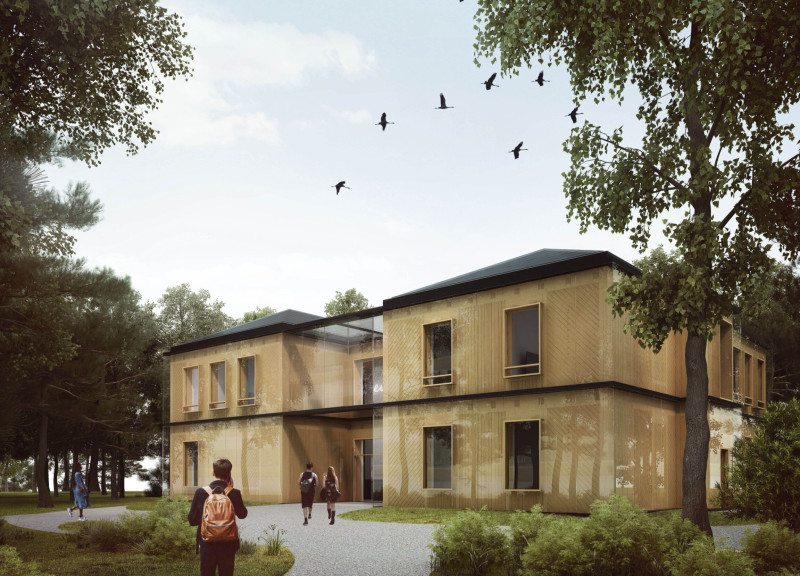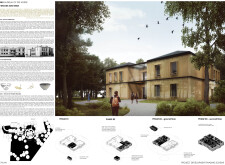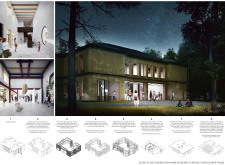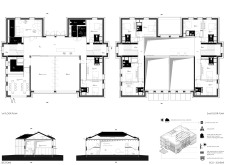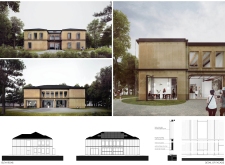5 key facts about this project
The Omul Museum of the Horse of Woods and Man is an architectural project situated in the North-Lugansk region. This structure serves as a cultural and educational hub, promoting awareness of sustainability and the historical significance of wood and horses. The museum is designed with a clear focus on adaptive reuse, integrating the existing framework into a modern architectural context while respecting its original characteristics.
The primary functions of the museum include exhibition spaces, community gathering areas, and educational workshops. The design comprises two levels: a ground floor that accommodates a large exhibition hall and an upper floor dedicated to accommodation units. This layered approach maximizes both space and visitor engagement, allowing for fluid interaction among different functions.
The project distinguishes itself through several unique design approaches that leverage the principles of sustainability and adaptive reuse. Notably, the design incorporates high-performance materials and innovative construction techniques, emphasizing the use of wood throughout the structure. The facade features clad timber and extensive glazing, which not only provide aesthetic appeal but also enhance energy efficiency and natural lighting. The use of double-skin facades further improves thermal performance.
This project is marked by its phased development strategy, which enables flexible implementation based on community feedback. Each phase can evolve independently, making the museum adaptable to changing needs and allowing for growth in line with its mission. This approach contrasts with traditional museum designs that often rely on a fixed plan.
The integration of environmentally friendly systems is another distinguishing aspect of the design. Features such as rainwater harvesting and solar panels contribute to the building's sustainability goals. The landscape design complements the architectural form, creating a seamless connection between the museum and its natural surroundings, underscoring the themes of ecology and preservation.
For a comprehensive understanding of the architectural plans, sections, and detailed designs that make this project distinctive, readers are encouraged to explore the presentation of the Omul Museum of the Horse of Woods and Man. Understanding these architectural ideas will present a clearer picture of the project's impact and functionality within the context of its environment.


